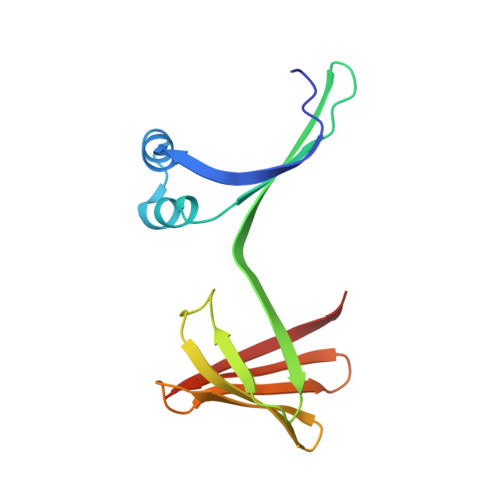Engineering the hCRBPII Domain-Swapped Dimer into a New Class of Protein Switches.
Ghanbarpour, A., Pinger, C., Esmatpour Salmani, R., Assar, Z., Santos, E.M., Nosrati, M., Pawlowski, K., Spence, D., Vasileiou, C., Jin, X., Borhan, B., Geiger, J.H.(2019) J Am Chem Soc 141: 17125-17132
- PubMed: 31557439
- DOI: https://doi.org/10.1021/jacs.9b04664
- Primary Citation of Related Structures:
6E50, 6E51, 6E5E, 6E5Q, 6E5R, 6E5S, 6E6L, 6E7M, 6MCU, 6MCV, 6MKV, 6MLB, 6ON5, 6ON7, 6ON8 - PubMed Abstract:
Protein conformational switches or allosteric proteins play a key role in the regulation of many essential biological pathways. Nonetheless, the implementation of protein conformational switches in protein design applications has proven challenging, with only a few known examples that are not derivatives of naturally occurring allosteric systems. We have discovered that the domain-swapped (DS) dimer of hCRBPII undergoes a large and robust conformational change upon retinal binding, making it a potentially powerful template for the design of protein conformational switches. Atomic resolution structures of the apo- and holo-forms illuminate a simple, mechanical movement involving sterically driven torsion angle flipping of two residues that drive the motion. We further demonstrate that the conformational "readout" can be altered by addition of cross-domain disulfide bonds, also visualized at atomic resolution. Finally, as a proof of principle, we have created an allosteric metal binding site in the DS dimer, where ligand binding results in a reversible 5-fold loss of metal binding affinity. The high resolution structure of the metal-bound variant illustrates a well-formed metal binding site at the interface of the two domains of the DS dimer and confirms the design strategy for allosteric regulation.
- Department of Chemistry , Michigan State University , East Lansing , Michigan 48824 , United States.
Organizational Affiliation:


















